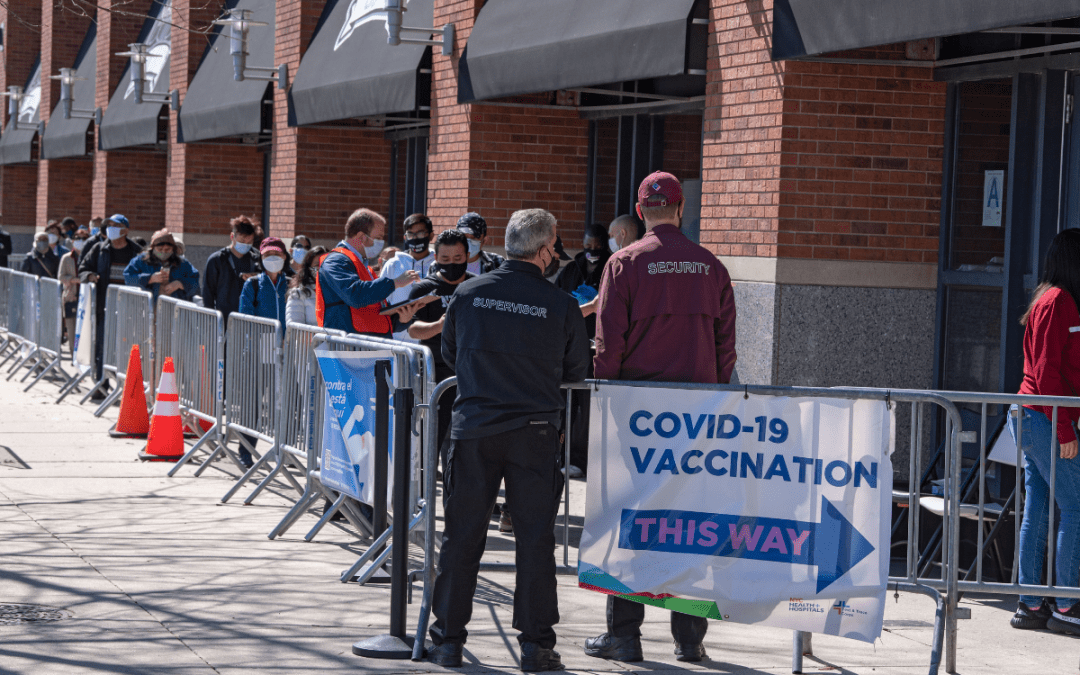A report in Nature Human Behaviour in February 2023 examines reporting oversights in examining the factors behind vaccine intentions and uptake. The authors emphasise the importance of language evolution to “reflect social and structural inequities”.
“To achieve health equity, we must acknowledge the extent to which racism and health inequities serve as barriers to vaccine-seeking behaviours among people of colour.”
The paper suggests that in reporting on vaccine intentions, “news stories, journal articles, and other reports” were responsible for perpetuating a narrative that doesn’t account for structural “drivers of disparities”.
Early COVID-19 reporting
The authors recognise that the early stages of the rollout of COVID-19 vaccines in the USA saw a higher uptake of vaccines among “White, non-Hispanic persons as compared with people of colour”. Initially, “early racial and ethnic disparities” in these vaccination rates encouraged reporters to suggest that these disparities were driven by vaccine hesitancy. The paper indicates that beside the possibility of vaccine hesitancy, other factors were likely at play.
Vaccine hesitancy
Although vaccine hesitancy is not unique to COVID-19 vaccination programmes, we have witnessed a proliferation of anti-vaccine messaging, misinformation, and confusion during the pandemic, which have contributed to greater awareness of the issue.
The authors consider the implications of the term vaccine hesitancy, which “might be perceived as placing responsibility for vaccination status on the individual”, without acknowledging the “historical and current social and structural inequities that affect vaccine confidence”.
“The failure of the media and scientific scholars to contextualise how inequities affect vaccine intentions and uptake among people of colour during a critical period when there was a defined goal for adult COVID-19 vaccination in the USA reveals missed opportunities to change the narrative from hesitancy and refusal toward racism and inequities that affect vaccine intentions and uptake.”
Structural and social barriers
Among the issues that the paper identifies, concerns such as “distance to travel” and “language barriers” are explored. For example, the authors state that “millions of people of colour lack access to public or personal transportation”. Therefore, accessing a vaccination provider is made more difficult or impossible. As we explored in our post on the role of pharmacies in the US vaccination campaign, bringing vaccines closer to the people we are targeting increases uptake.
Another issue is access to childcare or paid leave, which is particularly pertinent to “essential workers”, a group “overrepresented by people of colour”. These access-related barriers highlight that “vaccine uptake is multifactorial”.
Other factors include linguistic or cultural differences due to the “increasingly culturally and linguistically diverse society” in the US. If a person is unable to comprehend health information in English, due to “limited English proficiency”, they face “substantial challenges”. Additionally, the authors note that although the population is “diverse”, this is not reflected in the “diversity of US physicians”.
“The lack of access to culturally or linguistically appropriate resources…has been linked with negative health outcomes.”
How might vaccine communication contribute to vaccine hesitancy?
Although the paper highlights valid concerns with structural and social barriers, we also consider the possibility that some of these factors play a role in exacerbating any kind of hesitancy towards vaccine acceptance. Perhaps, then, the responsibility for the hesitancy lies with the health communication rather than the individual.
However, it is evident that these barriers deny the individual complete autonomy in vaccine-related decisions. Therefore, the paper offers “calls to action” to promote more equitable and effective communication.
Calls to action
The report suggests that the media and scientific writers have a responsibility regarding vaccine messaging and attitudes among people of colour. Thus, the authors recommend the following:
- Avoid blaming people of colour, by naming racism (not race or ethnicity) as the primary risk factor for disparities in vaccine intentions and uptake.
- Name other contextual factors (for example, inequitable access and mistrust) and other related risk factors as probable alternates for these disparities.
- Acknowledge and critically examine how experiences of racism, discrimination and health inequities (and not race or ethnicity) influence vaccine-seeking behaviours among people of colour.
- Acknowledge that race is a social construct, and not a biological driver for disparities in vaccine intentions and uptake.
- Examine race and ethnicity as indicators, and not drivers, of inequities and disparities in vaccine intentions and uptake.
With these suggestions, the authors hope to see continued increases in vaccine uptake across all populations in the US.
How do you think health communication can improve to address or overcome structural and social barriers, and are there any that the paper overlooks?
For more on health equity and vaccine uptake, join us at the World Vaccine Congress in Washington this April.





